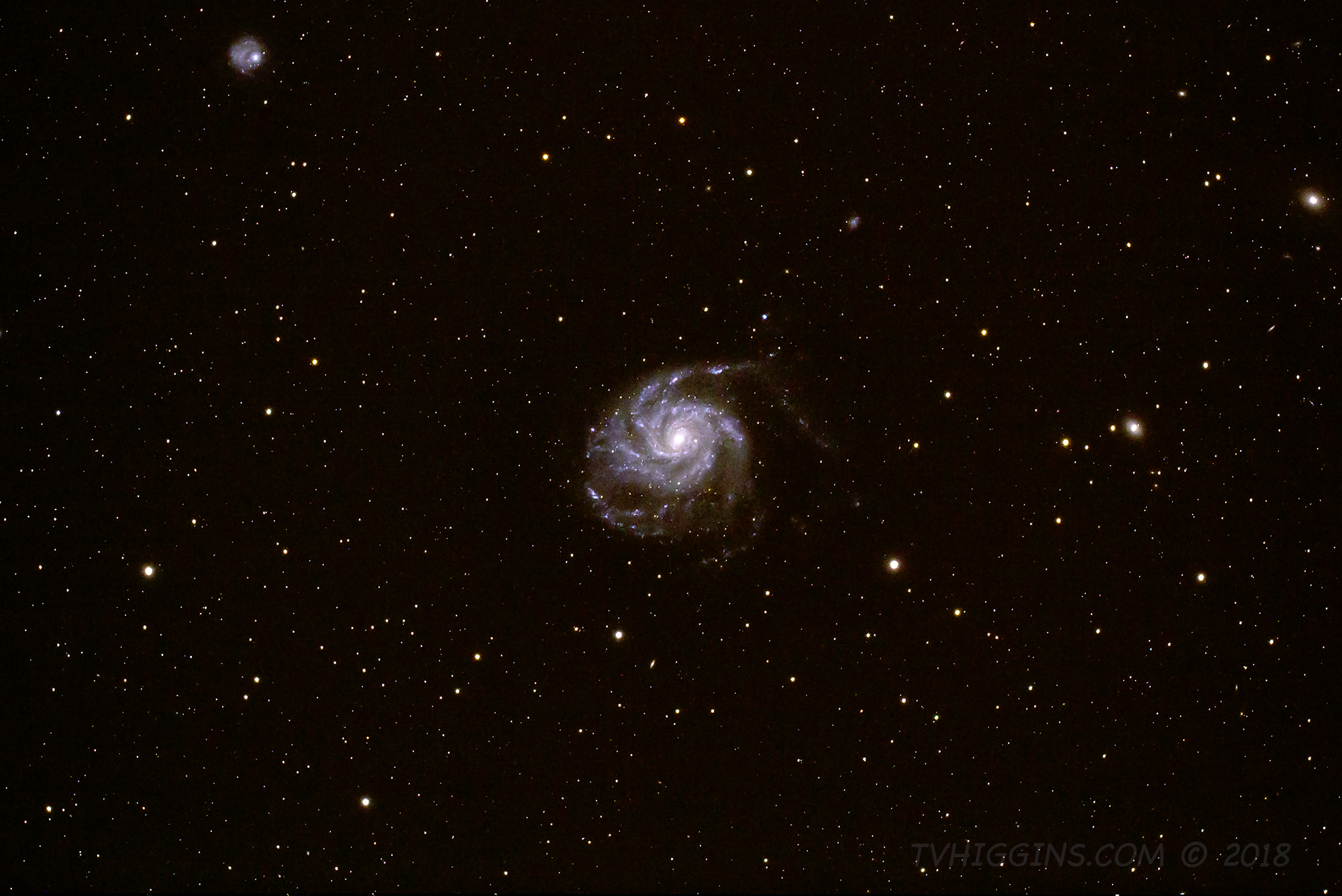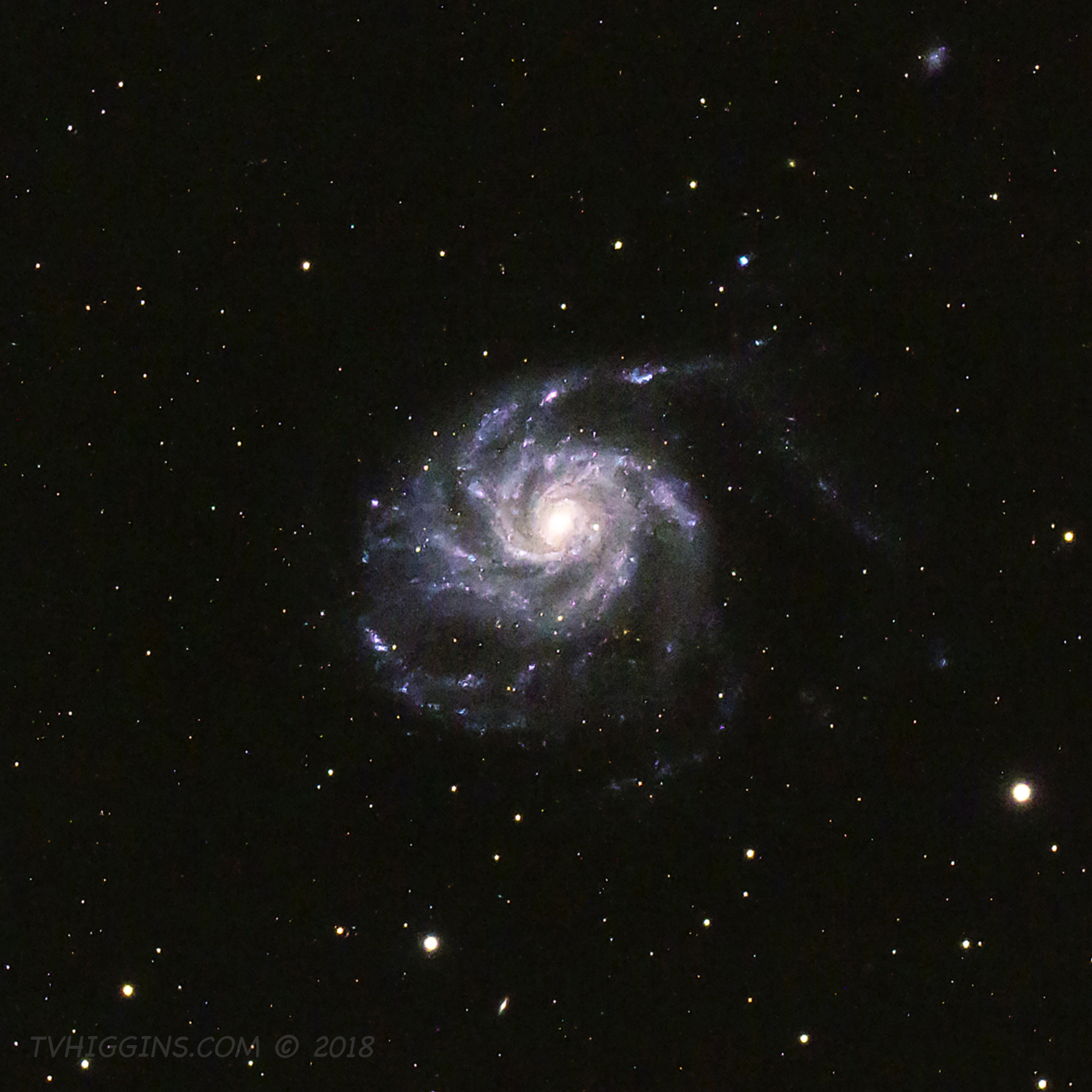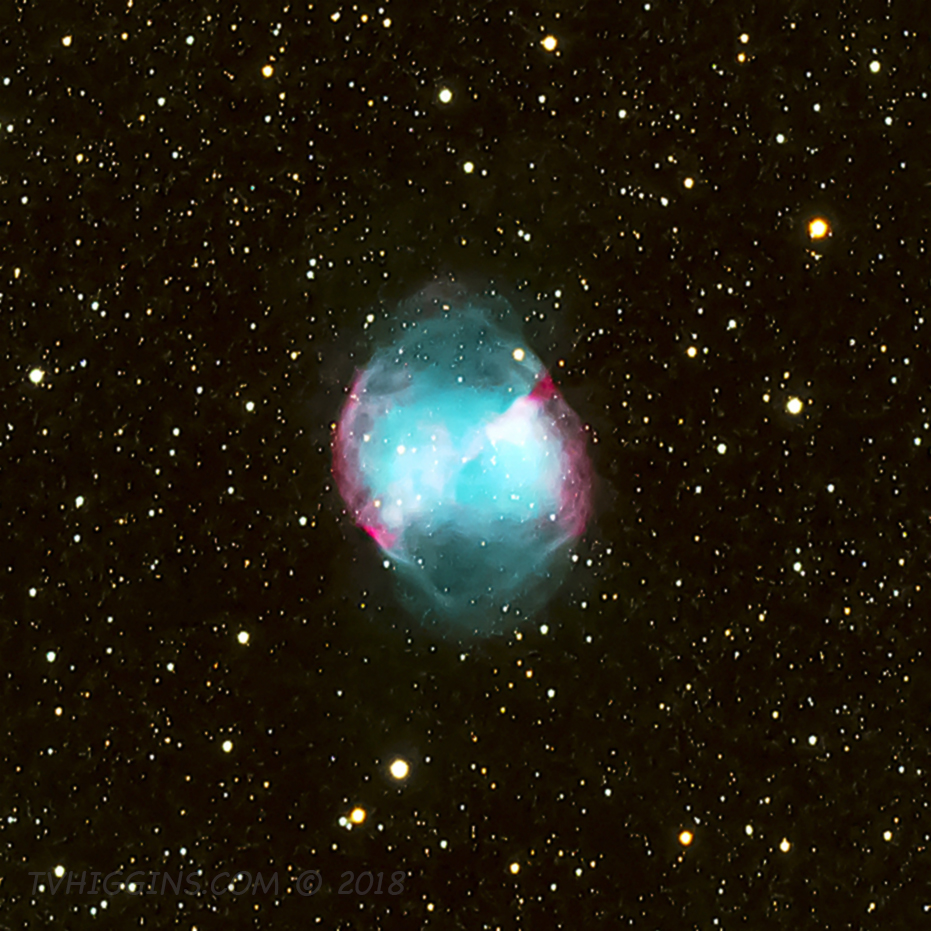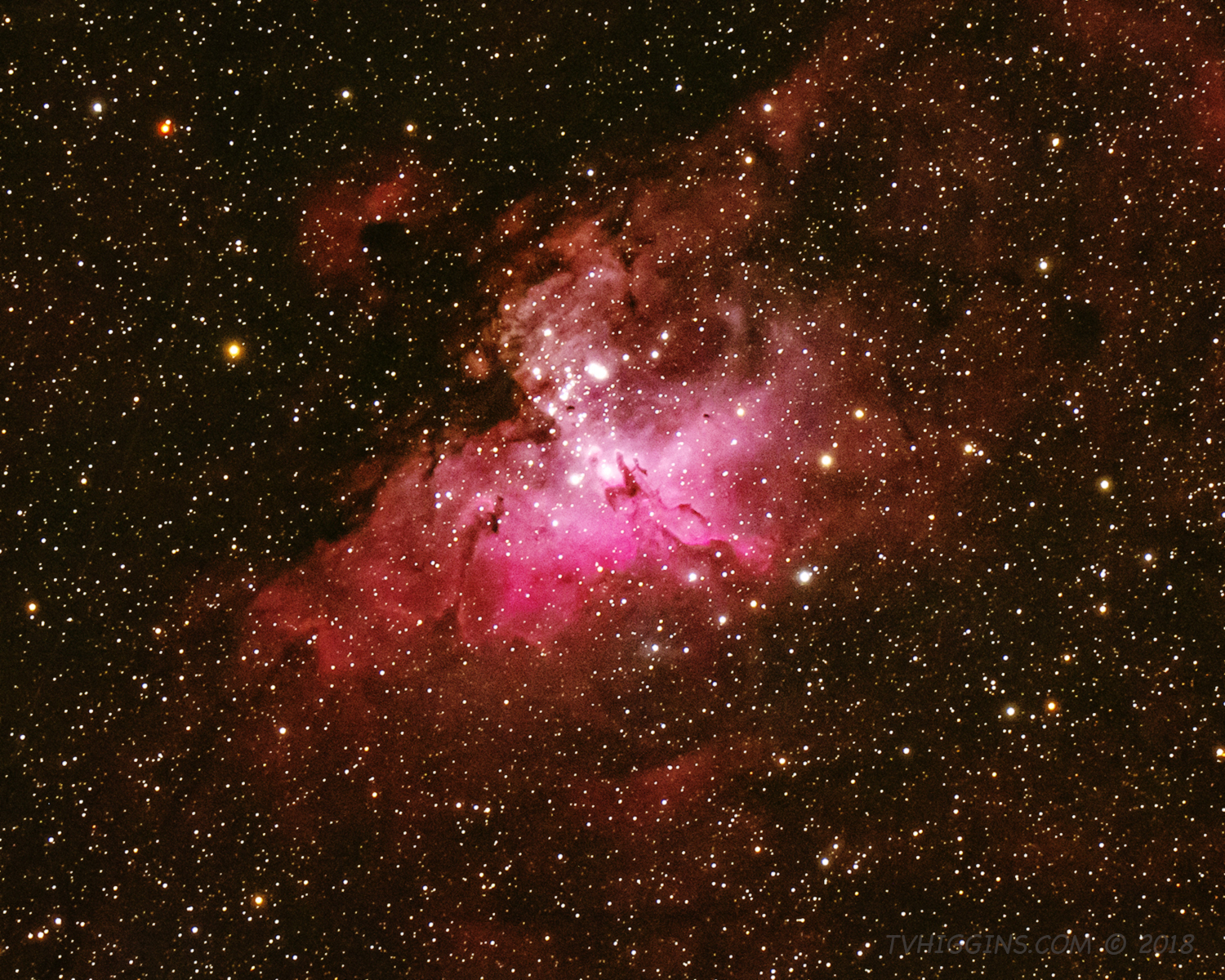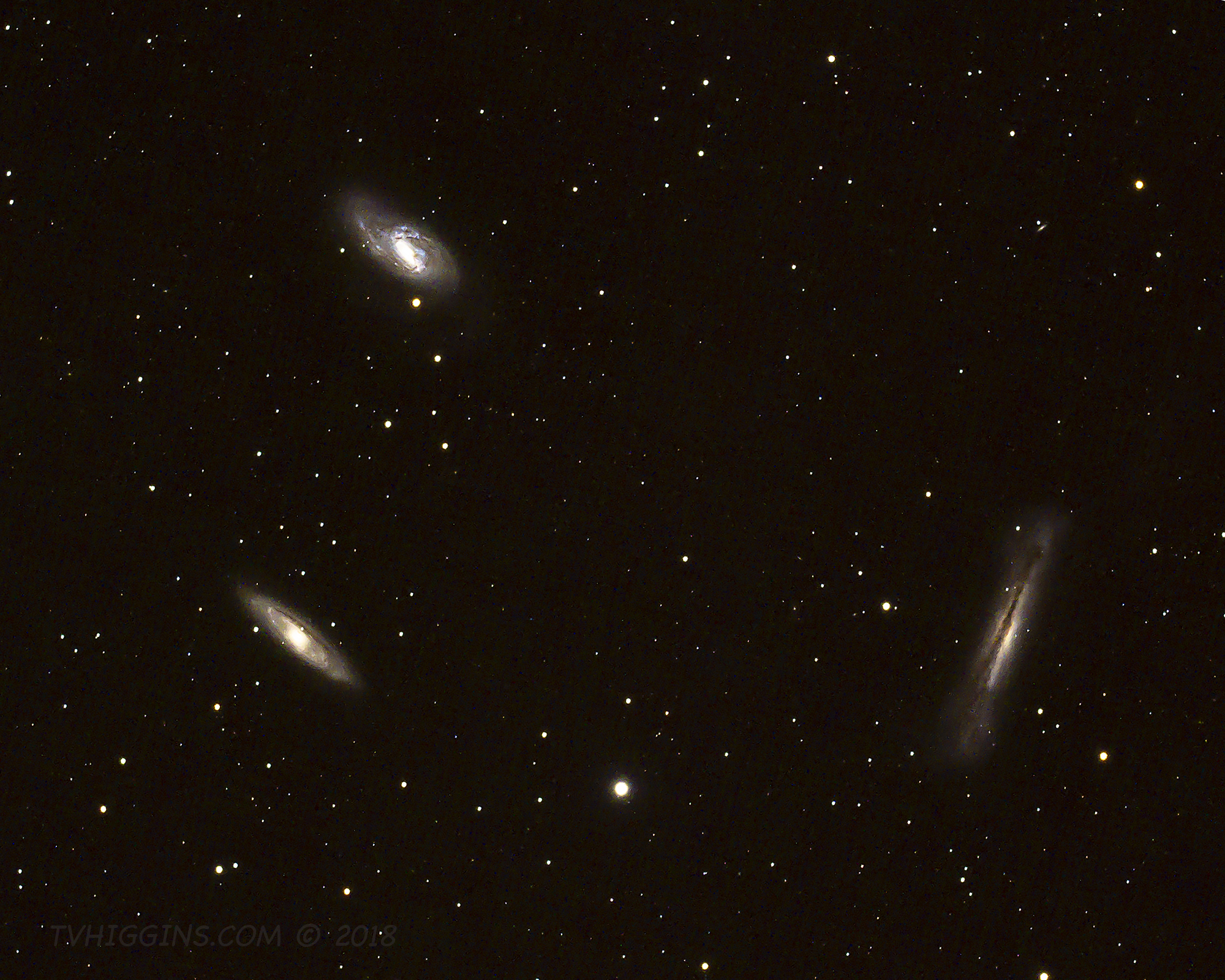The Pinwheel Galaxy Neighborhood
- Telescope: Stellarvue SVA130T-IS
- Mount: Losmandy G-11 with Gemini 2 controller
- Autoguiding: Yes
- Optical Configuration: 0.72x field flattener & reducer (f/5)
- Camera: Canon 60Da
- Light Frames: 41, 300-s subframes stacked (205 min.)
- Calibration: None (no darks, no flats, no biases)
- Exposure Time(s): 3.42 h, 205 min. (41 x 5 min.)
- ISO: 800
- Processing: Photoshop CC
- Imaging Location: Sierra Nevada Mountains (Altitude: 8,600 ft)
This full-frame image depicts the Pinwheel Galaxy (M101) and some nearby galaxies:
- NGC 5473 (right); Distance: 109 Mly
- NGC 5485 (upper right); Distance: 91.1 Mly
- NGC 5477 (above and to the right of M101): Distance: 20.9 Mly
- NGC 5474 (top left); Distance: 21.2 Mly
The gravitational influence of the Pinwheel Galaxy is most evident in NGC 5474, which has an off-center nucleus possibly caused by a previous close encounter with M101.
